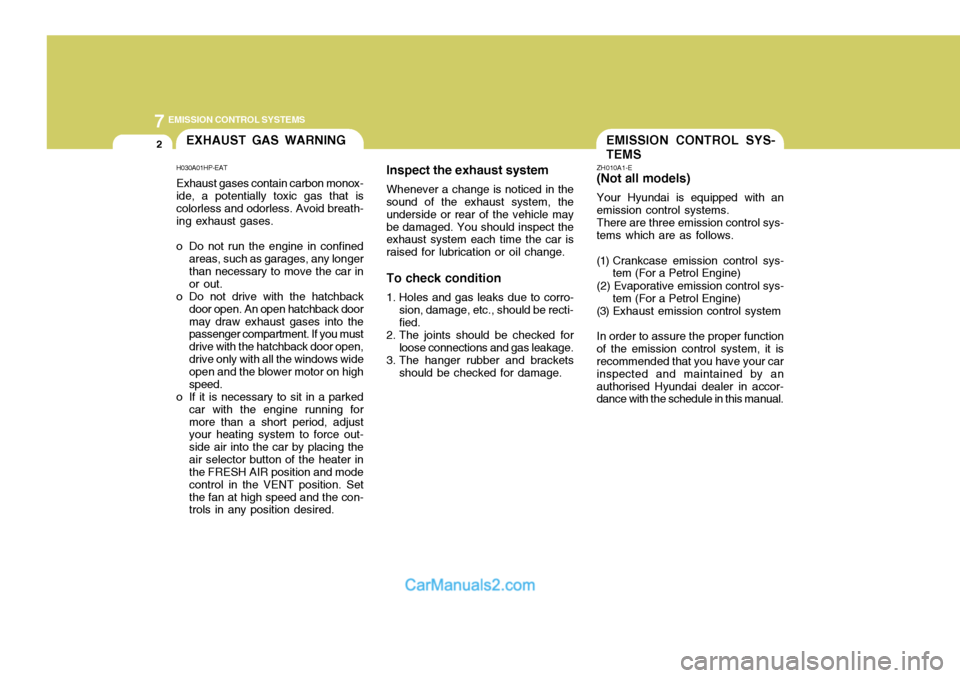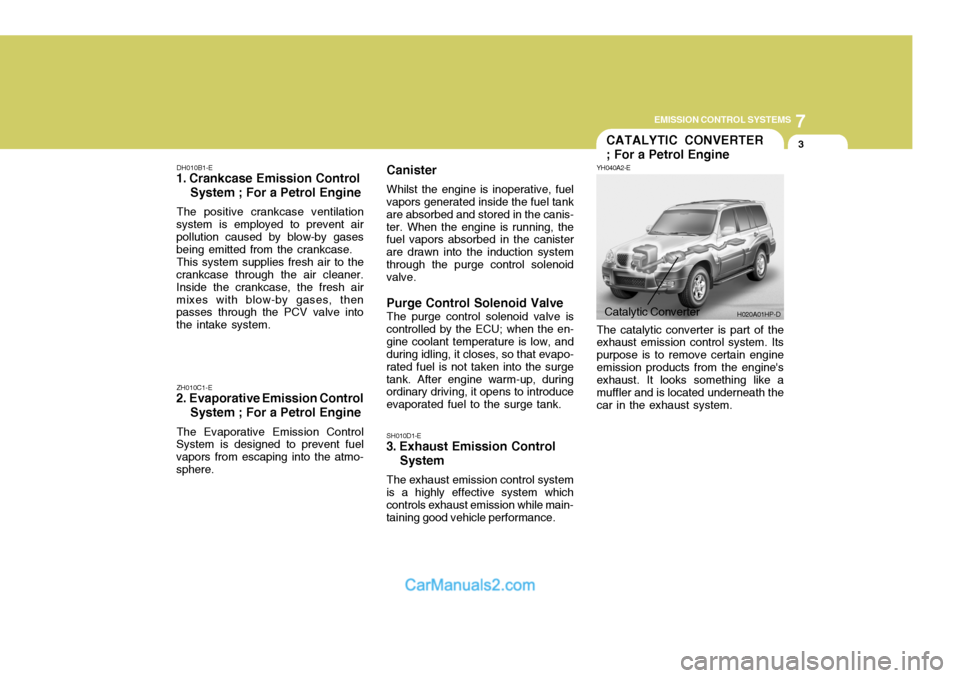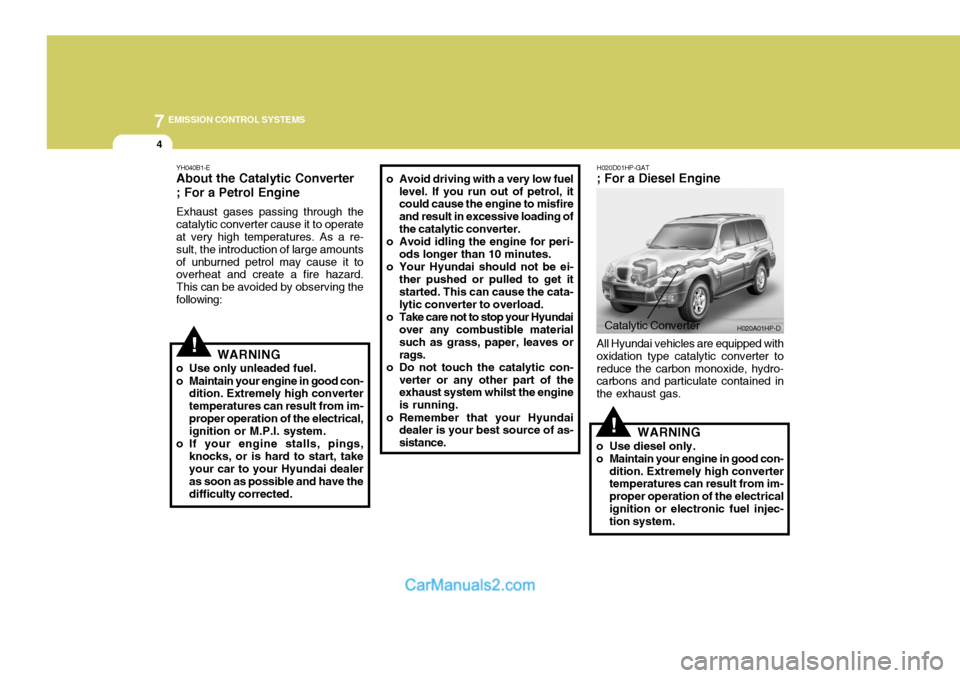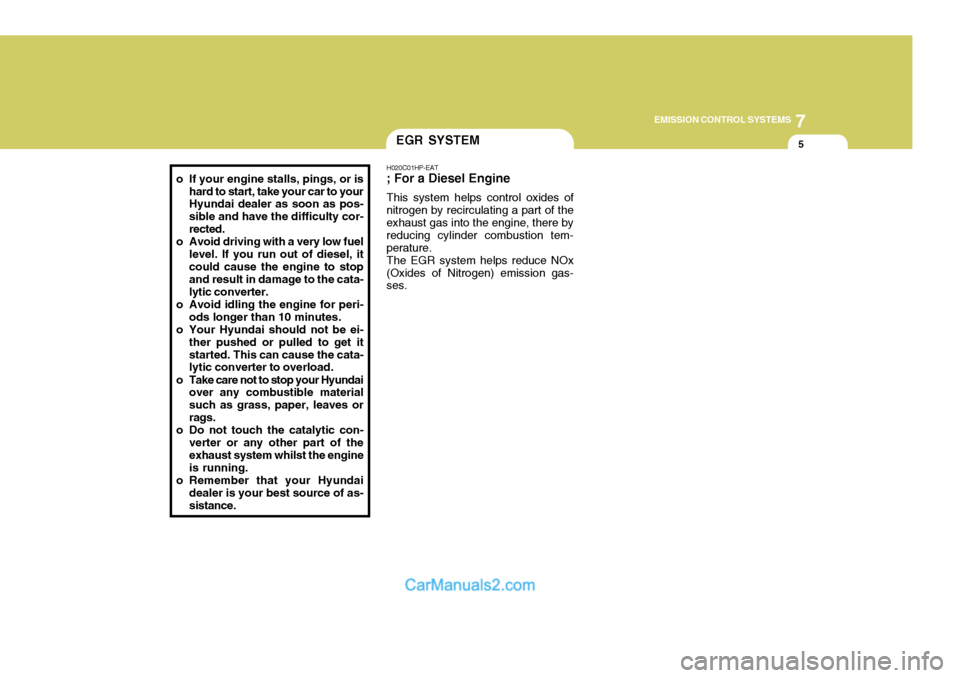Page 515 of 539
6 OWNER MAINTENANCE
38
AMPERAGES15A 15A15A-
10A 10A
-
15A 15A15A15A 10A 10A10A 10A 10A 10A15A25A20A
NO. 10 NO. 11NO. 12NO. 13NO. 14NO. 15NO. 16NO. 17NO. 18NO. 19NO. 20NO. 21NO. 22NO. 23
NO. 24
NO. 25
NO. 26
NO. 27
NO. 28
NO. 29
DESCRIPTION
CIRCUIT PROTECTED
Fuel Heater and Sensor(Diesel Engine)
Headlamp(Low beam)Headlamp(High beam) -
A/C Compressor Relay, Triple Switch
TCI Fan Relay(COVEC-F/EGR)--ECM(Diesel Engine)ECM(Diesel Engine)
ECM(Diesel Engine), Air Heater Relay(Diesel Engine), EGR Solenoid(Diesel Engine)
Illuminations, Combination LampLicense Lamp, Combination Lamp
ABS Control Module, ABS Relay, EBD Relay
ECM(Diesel Engine), Headlamp Relay, Condenser Fan Relay
(Petrol/COVEC-F), EGR Solenoid(COVEC-F)ABS Control Module
Cruise Control Module
Front Wiper and Washer
Power Seat Switch
Power Outlet Relay
FUSE
Page 516 of 539
6
OWNER MAINTENANCE
39
AMPERAGES 50A 30A 40A 40A 30A 40A 20A-
20A 10A
15A
NO. 1
NO. 2
NO. 3
NO. 4
NO. 5
NO. 6
NO. 7
NO. 8
NO. 9
DESCRIPTION
CIRCUIT PROTECTED
Power Connector(A,B), Engine Compartment Fuse and Relay #2
(Fuse 28,29), Inner Panel Fuse Box(Fuse 6,7,8, 9)
Start Relay, Ignition Switch
Condenser Fan Relay, Engine Compar tment Fuse and Relay Box #2(Fuse 14,15)ABS Control Module
Power Window Relay
Tail Lamp Relay, Engine Compartment Fuse and Relay Box #2(Fuse 11,12)ABS Control Module-
Fuel Pump Relay, ECM, Ignition Failure Sensor
A/CON, TCM, ETACM, Data Link Connector, Siren, ImmobiliserControl Module
Interior Lamp, Map Lamp, Audio, Instrument Cluster, Front Door EdgeWarning Lamp
FUSIBLE LINK
NO. 30
NO. 31
Page 519 of 539

7EMISSION CONTROL SYSTEMS
2
Inspect the exhaust systemWhenever a change is noticed in the
sound of the exhaust system, the underside or rear of the vehicle maybe damaged. You should inspect the exhaust system each time the car is raised for lubrication or oil change. To check condition
1. Holes and gas leaks due to corro- sion, damage, etc., should be recti- fied.
2. The joints should be checked for loose connections and gas leakage.
3. The hanger rubber and brackets
should be checked for damage.EXHAUST GAS WARNING
H030A01HP-EAT Exhaust gases contain carbon monox- ide, a potentially toxic gas that is colorless and odorless. Avoid breath-ing exhaust gases.
o Do not run the engine in confined areas, such as garages, any longer than necessary to move the car inor out.
o Do not drive with the hatchback
door open. An open hatchback doormay draw exhaust gases into the passenger compartment. If you must drive with the hatchback door open,drive only with all the windows wide open and the blower motor on high speed.
o If it is necessary to sit in a parked
car with the engine running formore than a short period, adjust your heating system to force out- side air into the car by placing theair selector button of the heater in the FRESH AIR position and mode control in the VENT position. Setthe fan at high speed and the con- trols in any position desired.EMISSION CONTROL SYS- TEMS
ZH010A1-E
(Not all models)
Your Hyundai is equipped with an
emission control systems. There are three emission control sys-
tems which are as follows.
(1) Crankcase emission control sys- tem (For a Petrol Engine)
(2) Evaporative emission control sys- tem (For a Petrol Engine)
(3) Exhaust emission control system
In order to assure the proper function
of the emission control system, it is recommended that you have your car inspected and maintained by anauthorised Hyundai dealer in accor- dance with the schedule in this manual.
Page 520 of 539

7
EMISSION CONTROL SYSTEMS
3
DH010B1-E
1. Crankcase Emission Control System ; For a Petrol Engine
The positive crankcase ventilation
system is employed to prevent air pollution caused by blow-by gases being emitted from the crankcase.
This system supplies fresh air to the
crankcase through the air cleaner.Inside the crankcase, the fresh airmixes with blow-by gases, then passes through the PCV valve into the intake system.
ZH010C1-E
2. Evaporative Emission Control System ; For a Petrol Engine
The Evaporative Emission Control
System is designed to prevent fuel vapors from escaping into the atmo-sphere. Canister
Whilst the engine is inoperative, fuel
vapors generated inside the fuel tankare absorbed and stored in the canis-ter. When the engine is running, the fuel vapors absorbed in the canister are drawn into the induction systemthrough the purge control solenoid valve. Purge Control Solenoid Valve
The purge control solenoid valve is
controlled by the ECU; when the en- gine coolant temperature is low, and during idling, it closes, so that evapo- rated fuel is not taken into the surgetank. After engine warm-up, during ordinary driving, it opens to introduce evaporated fuel to the surge tank.
SH010D1-E
3. Exhaust Emission Control System
The exhaust emission control system
is a highly effective system which controls exhaust emission while main- taining good vehicle performance.
Catalytic Converter H020A01HP-D
CATALYTIC CONVERTER ; For a Petrol Engine
YH040A2-E The catalytic converter is part of the exhaust emission control system. Its purpose is to remove certain engineemission products from the engine's exhaust. It looks something like a muffler and is located underneath thecar in the exhaust system.
Page 521 of 539

7EMISSION CONTROL SYSTEMS
4
YH040B1-E About the Catalytic Converter ; For a Petrol Engine Exhaust gases passing through the catalytic converter cause it to operate at very high temperatures. As a re- sult, the introduction of large amountsof unburned petrol may cause it to overheat and create a fire hazard. This can be avoided by observing thefollowing: H020D01HP-GAT
; For a Diesel Engine
!WARNING
o Use only unleaded fuel.
o Maintain your engine in good con- dition. Extremely high converter temperatures can result from im-proper operation of the electrical, ignition or M.P.I. system.
o If your engine stalls, pings, knocks, or is hard to start, takeyour car to your Hyundai dealer as soon as possible and have thedifficulty corrected. o Avoid driving with a very low fuel
level. If you run out of petrol, it could cause the engine to misfire and result in excessive loading ofthe catalytic converter.
o Avoid idling the engine for peri- ods longer than 10 minutes.
o Your Hyundai should not be ei- ther pushed or pulled to get itstarted. This can cause the cata- lytic converter to overload.
o Take care not to stop your Hyundai over any combustible material such as grass, paper, leaves orrags.
o Do not touch the catalytic con- verter or any other part of the exhaust system whilst the engine is running.
o Remember that your Hyundai dealer is your best source of as-sistance.
Catalytic Converter H020A01HP-D
!
All Hyundai vehicles are equipped with oxidation type catalytic converter toreduce the carbon monoxide, hydro- carbons and particulate contained in the exhaust gas.
WARNING
o Use diesel only.
o Maintain your engine in good con- dition. Extremely high converter temperatures can result from im- proper operation of the electricalignition or electronic fuel injec- tion system.
Page 522 of 539

7
EMISSION CONTROL SYSTEMS
5
o If your engine stalls, pings, or is
hard to start, take your car to your Hyundai dealer as soon as pos- sible and have the difficulty cor-rected.
o Avoid driving with a very low fuel level. If you run out of diesel, it could cause the engine to stop and result in damage to the cata-lytic converter.
o Avoid idling the engine for peri- ods longer than 10 minutes.
o Your Hyundai should not be ei- ther pushed or pulled to get itstarted. This can cause the cata- lytic converter to overload.
o Take care not to stop your Hyundai over any combustible material such as grass, paper, leaves orrags.
o Do not touch the catalytic con- verter or any other part of theexhaust system whilst the engine is running.
o Remember that your Hyundai dealer is your best source of as- sistance.
EGR SYSTEM
H020C01HP-EAT
; For a Diesel Engine
This system helps control oxides of
nitrogen by recirculating a part of the exhaust gas into the engine, there by reducing cylinder combustion tem-perature. The EGR system helps reduce NOx
(Oxides of Nitrogen) emission gas- ses.
Page 523 of 539
Vehicle Identification Number (VIN) ............................ 8-2
Engine Number ............................................................ 8-2
Tyre Information ........................................................... 8-2
Tyre Pressures ............................................................ 8-3
Snow Tyres .................................................................. 8-3
Tyre Chains .................................................................. 8-3
Tyre Balancing ............................................................. 8-4
Tyre Rotation ................................................................ 8-4
Tyre Replacement ........................................................ 8-4
Wheel Replacement ..................................................... 8-5
Spare Tyre and Tools .................................................. 8-6
8
CONSUMER INFORMATION
8
Page 524 of 539
8CONSUMER INFORMATION
2
The vehicle identification number (VIN) is unique to each individual vehicle and is the number (sometimes referredto as chassis number) used upon the vehicle registration document to iden- tify the vehicle.The VIN will be found stamped upona plate attached to the engine bulk-head. The engine number is stamped on theengine block as shown in the drawing.
ZI010C1-E TYRE INFORMATION The tyres supplied on your new Hyundai are chosen to provide thebest performance for normal driving.VEHICLE IDENTIFICATION NUMBER (VIN)
DI070A1-E
I010A01HP-E
ENGINE NUMBER
Petrol engine
I010B01HP
I010B03HP
Diesel Engine
I010B01A-AAT
TYRE
ZI010C1-E
TYRE INFORMATION
The tyres supplied on your new
Hyundai are chosen to provide the best performance for normal driving.